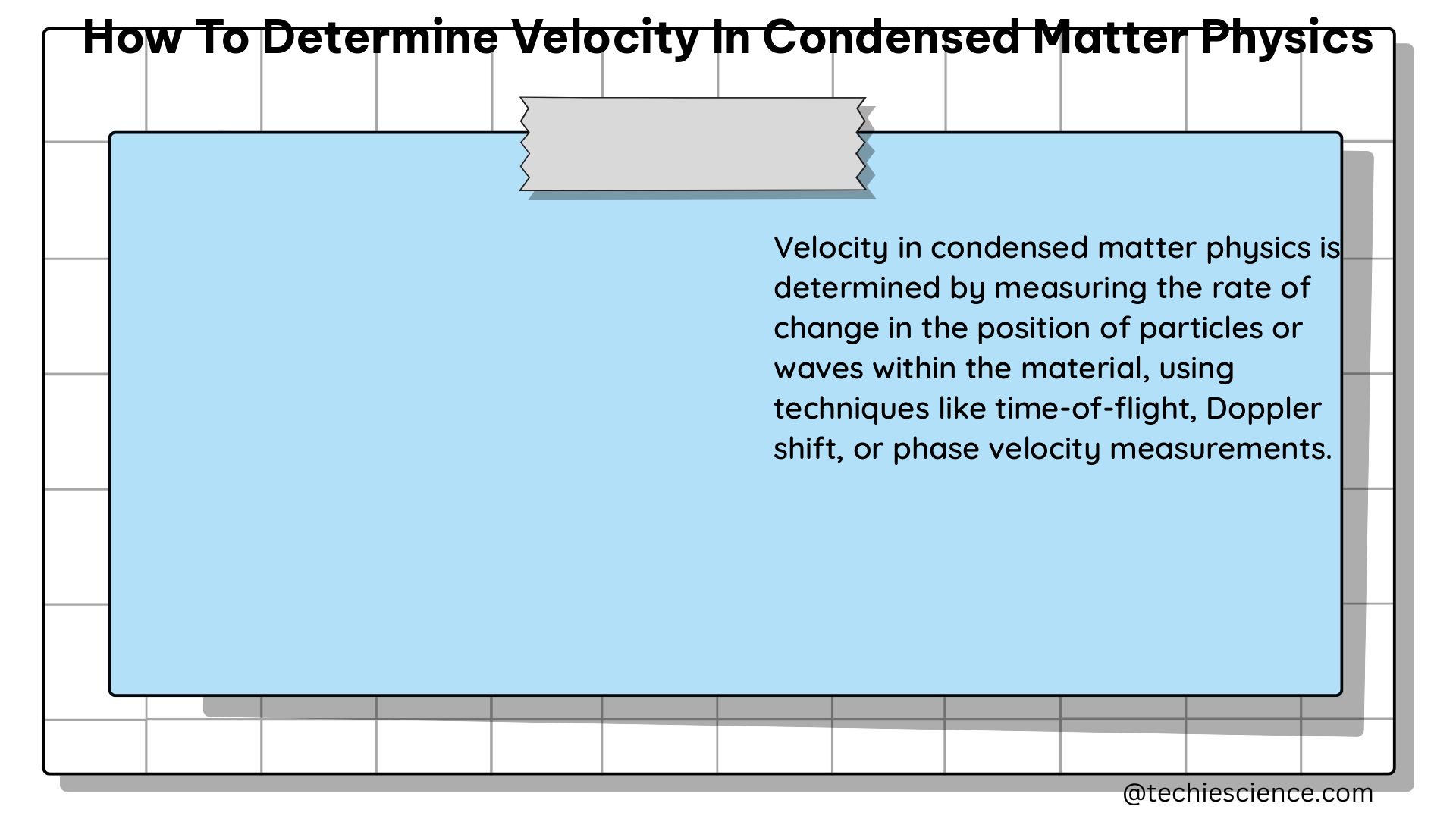Determining the velocity of particles in condensed matter systems is a fundamental task in understanding the dynamics and transport properties of these materials. One common approach to this problem is to utilize the Heisenberg equation of motion, a powerful tool in quantum mechanics that describes the time evolution of operators. This comprehensive guide will delve into the step-by-step process of employing the Heisenberg equation to derive the velocity of a particle in a condensed matter system.
The Heisenberg Equation of Motion
The Heisenberg equation of motion is a fundamental equation in quantum mechanics that describes the time evolution of an operator. Mathematically, it can be expressed as:
dA/dt = (1/iℏ) [A, H]
where A is the operator of interest, H is the Hamiltonian of the system, i is the imaginary unit, and ℏ is the reduced Planck constant.
To apply this equation to the problem of determining the velocity of a particle in a condensed matter system, we can choose A to be the momentum operator of the particle, which is given by:
p = ℏk
where k is the wavevector of the particle.
Substituting this into the Heisenberg equation, we obtain:
dp/dt = (1/iℏ) [p, H]
Specifying the Hamiltonian

To proceed further, we need to specify the form of the Hamiltonian H for the system. For a simple system consisting of a single particle in a potential, the Hamiltonian can be written as:
H = p²/(2m) + V(r)
where m is the mass of the particle and V(r) is the potential energy.
Evaluating the Commutator
Substituting this Hamiltonian into the Heisenberg equation of motion, we find:
dp/dt = (1/iℏ) [p, p²/(2m) + V(r)]
The commutator [p, p²/(2m)] is zero, since both p and p² are operators that act on the position variable r. Therefore, we are left with:
dp/dt = (1/iℏ) [p, V(r)]
To evaluate this commutator, we can use the fact that the momentum operator p acts on functions of r by taking the derivative with respect to r. That is, we have:
p f(r) = ℏ (df/dr)
Using this fact, we can calculate the commutator:
[p, V(r)] = ℏ (dV/dr)
Deriving the Velocity Equation
Substituting this result back into the Heisenberg equation of motion, we find:
dp/dt = (1/i) (dV/dr)
This equation tells us that the time derivative of the momentum of the particle is equal to the negative of the gradient of the potential energy.
To obtain the velocity of the particle, we can divide both sides of this equation by the mass of the particle:
dv/dt = (1/m) (dV/dr)
where v = p/m is the velocity of the particle.
This equation tells us that the acceleration of the particle is equal to the negative gradient of the potential energy divided by the mass of the particle. In other words, the force on the particle is equal to the negative gradient of the potential energy, in agreement with Newton’s second law.
Examples and Applications
Example 1: Particle in a Constant Force Field
Consider a particle in a constant force field, where the potential energy is given by V(r) = -F·r, where F is the constant force. Substituting this into the velocity equation, we get:
dv/dt = (1/m) (-F)
This shows that the particle will experience a constant acceleration equal to -F/m, which is the expected result for a particle in a constant force field.
Example 2: Particle in a Harmonic Potential
For a particle in a harmonic potential, the potential energy is given by V(r) = (1/2) k r², where k is the spring constant. Substituting this into the velocity equation, we get:
dv/dt = -(k/m) r
This equation describes the motion of a particle in a harmonic potential, which is characterized by simple harmonic motion.
Numerical Problem
Consider a particle of mass m = 1 kg in a potential energy field given by V(r) = (1/2) k r², where k = 100 N/m. If the particle is initially at rest at r = 0.1 m, calculate the velocity of the particle after t = 1 s.
Given:
– m = 1 kg
– k = 100 N/m
– r_0 = 0.1 m
– t = 1 s
Using the velocity equation:
dv/dt = -(k/m) r
Integrating the equation, we get:
v(t) = -(k/m) r(t)
Substituting the values, we find:
v(1 s) = -(100 N/m) / (1 kg) × 0.1 m = -10 m/s
Therefore, the velocity of the particle after 1 second is -10 m/s.
Conclusion
In this comprehensive guide, we have explored the step-by-step process of using the Heisenberg equation of motion to determine the velocity of a particle in a condensed matter system. By starting with the general Heisenberg equation, specifying the Hamiltonian, and evaluating the commutator, we derived an equation that relates the velocity of the particle to the gradient of the potential energy and the mass of the particle. We also provided examples and a numerical problem to illustrate the application of this approach. This guide should serve as a valuable resource for physics students and researchers working in the field of condensed matter physics.
References
- Quantum Condensed Matter Physics – Lecture Notes (2004)
- Condensed Matter Physics (2010)
- Solid State Theory – ITP Lecture Archive (2014)

The lambdageeks.com Core SME Team is a group of experienced subject matter experts from diverse scientific and technical fields including Physics, Chemistry, Technology,Electronics & Electrical Engineering, Automotive, Mechanical Engineering. Our team collaborates to create high-quality, well-researched articles on a wide range of science and technology topics for the lambdageeks.com website.
All Our Senior SME are having more than 7 Years of experience in the respective fields . They are either Working Industry Professionals or assocaited With different Universities. Refer Our Authors Page to get to know About our Core SMEs.